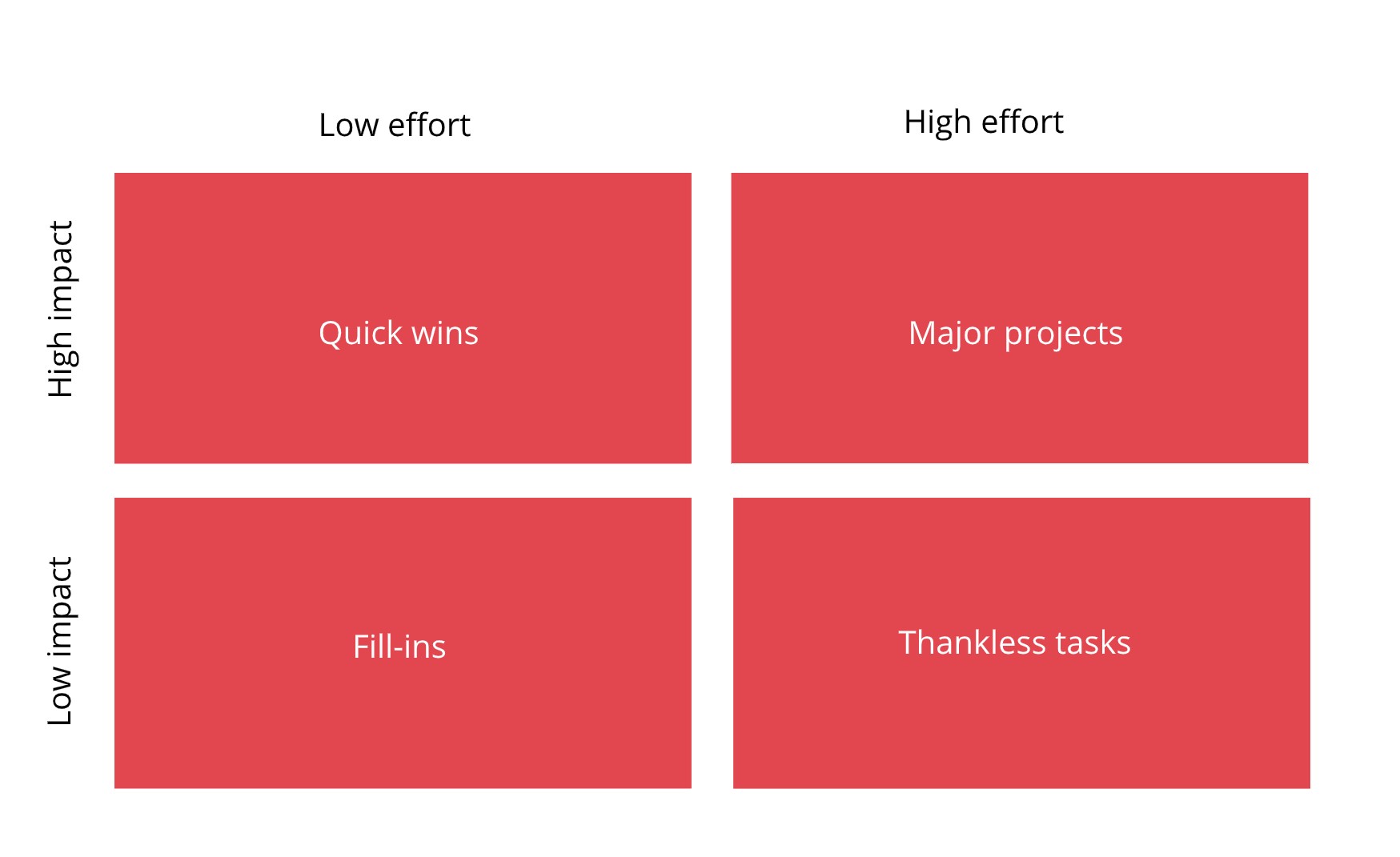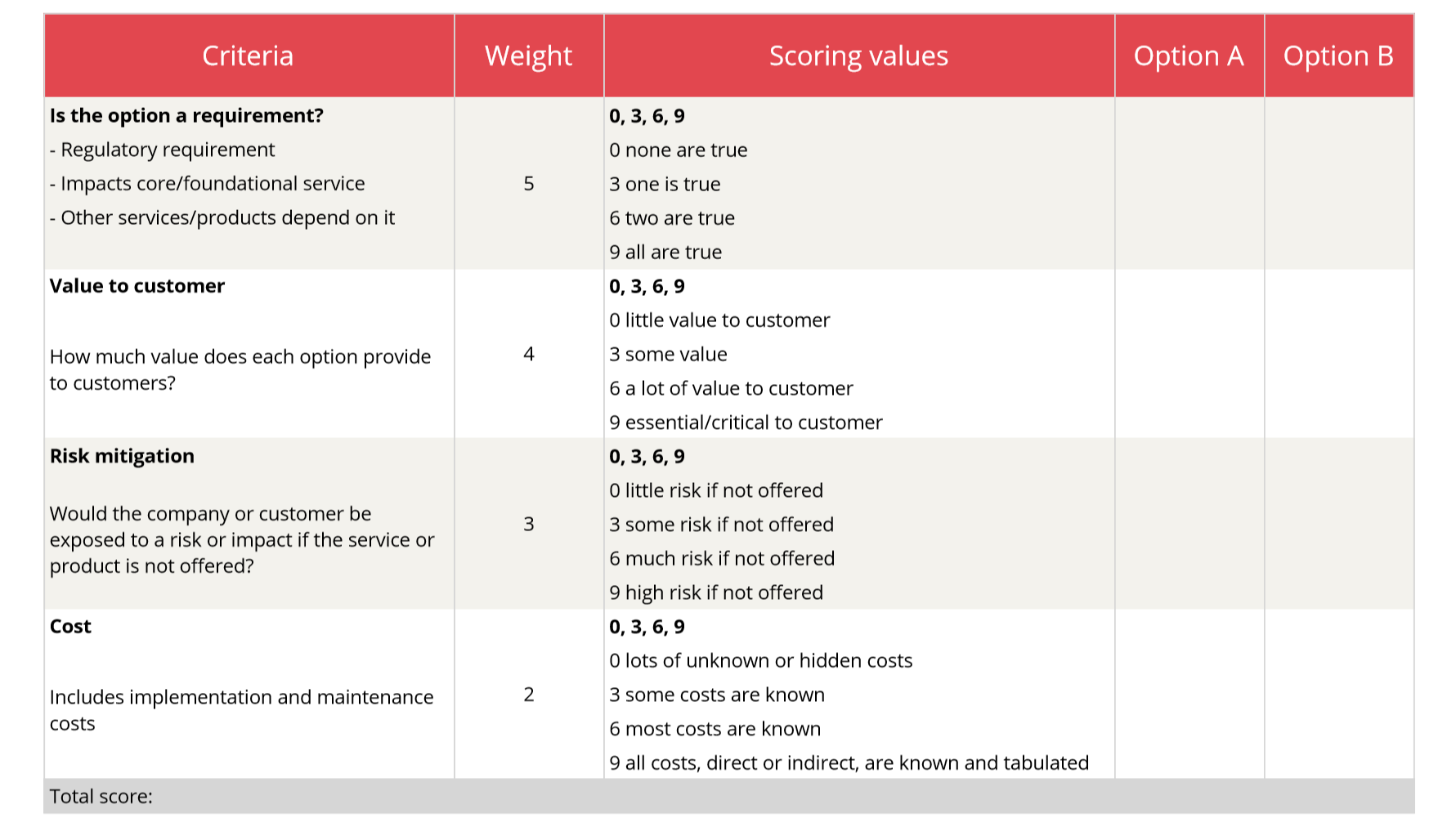 BACK TO ALL
BACK TO ALL

The modern business environment requires organizations and individuals to constantly adapt to changes and align their goals with the most recent market trends. Pursuing a wrong target may result in a financial disaster and increased project failure rate, so finding a proper business goal to concentrate on is essential. But how do you define which project is actually worth your time and effort? Through prioritization, of course!
It is a common practice for organizations to assign certain priority levels to every task they are planning to accomplish. Unlike traditional to-do lists, priority matrixes not just remind you of things that require your attention but point out which tasks must be accomplished first. So, what is a prioritization matrix, and how to create one?
What is a project prioritization matrix?
The idea behind the priority matrix is quite simple – it is a tool designed to help you determine the importance of different tasks. When creating a matrix, keep it as simple as possible, so managers and employees can understand it at a glance and use it in day-to-day operations. The priority matrix works perfectly for individuals or small, day-to-day business tasks. However, the basic version of a priority matrix can turn out to be insufficient to analyze large projects, where multiple stakeholders’ opinions and outside factors are involved.
In its most simple and generalized version, a priority matrix can be represented by a 2x2 grid with 2 variables, such as “effort vs. impact” or “time vs. cost.”

This model works perfectly when there is only one person involved in decision-making or when the task itself is unsophisticated. However, more complicated projects, which involve a wide variety of factors, require creating more complex matrixes. How to design one? Let’s find out!
Creating a comprehensive project prioritization matrix
To determine which project is worth developing, it is commonly advised to go through the following 5 steps:
- Start with determining criteria and creating a rating scale for each of them. The criteria, in this case, refer to the factors that help you separate essential projects from less important ones. A typical example of a criterion is Value to Customers, but you are free to create any criteria as long as they do the job. Mind that making more than 12 of them is not recommended. After you are done with this part, make sure to establish a rating scale. It is applied to every project to assess how well they satisfy different criteria.
- Assign a weight to your criteria and place them in descending order. The weight will be then multiplied by a numeric value of each project. The numeric value is derived from the rating scale you created in the previous step; it measures how well a certain project satisfies a given criteria. This final number will be used to determine a priority score.
- Create a project prioritization matrix. The criteria go to a column on the left while their weights, scoring values, and the names of projects should be in the top line.

- Do calculations to determine priorities. Evaluate every project and see to what extent they satisfy the criteria. The final value of each project is derived through multiplying the weight of each criterion by the project’s numeric value and adding them all up. For the best results, it is recommended to perform the calculation in teams. Unlike the simple matrixes discussed above, a complex solution requires involving multiple employees to ensure that no mistakes were made. We will cover other advantages of working in groups later, so let’s move to the final step in creating your prioritization matrix.
- Discuss the scores and established priorities with other employees. A priority matrix is a very handy tool, but it doesn’t guarantee that a project that is given a maximum score will be successful. The results of the evaluation can be adjusted to ensure that they align with the strategy of the company and the employees’ preferences. A group discussion opens a way for creative thinking and allows the managers to hear what the workers think of a certain project, which is essential for a healthy environment at the workplace.
Why listening to employees’ opinions is crucial when defining priorities?
Organizations consist of individuals, so letting employees be heard is essential. People have different views on priorities, especially considering how subjective certain criteria can be. If your workers can’t agree with the scores that different projects should receive, your organization is most likely open to conflicts, and those are never beneficial. Make sure to let every stakeholder express their opinion and come up with a well-thought-out decision regarding the business’s goals and core values. It is also important to remember the overall strategy of your organization and avoid wasting time on things that don’t align with it.



